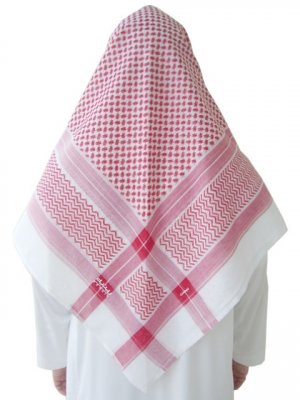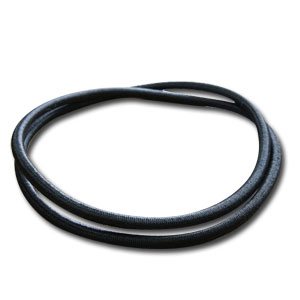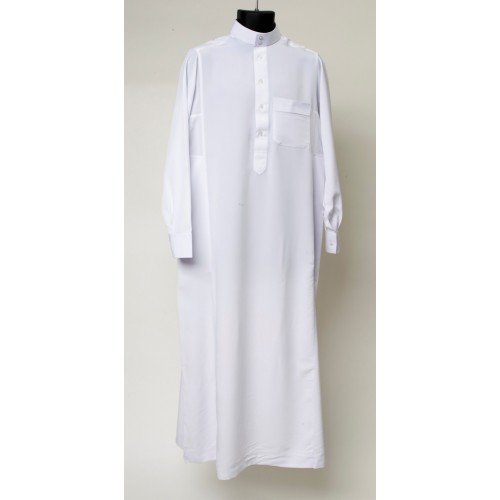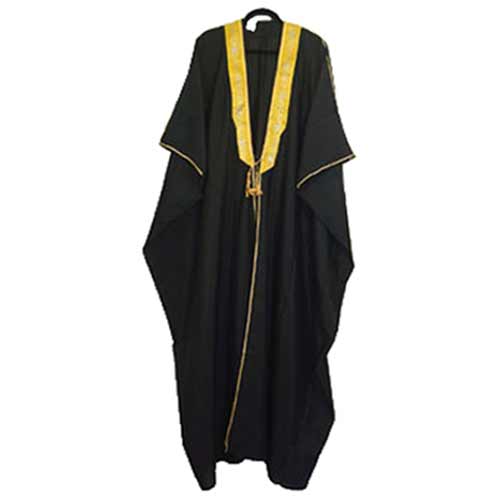*charisma*
#AlwaysInMyDuas
- Messages
- 5,085
- Reaction score
- 1,030
- Gender
- Female
- Religion
- Islam
Are you referring to the thobe? I can name several countries that it relates to before even considering jews.
Are you referring to the thobe? I can name several countries that it relates to before even considering jews.
Well all I see is the most resembles with them. What I rather want to know is where did they adopt it from?.
We know the "little bicycle tire" on their head use to be a rope to tie their camels with but later on becoming not nececcary is it because of this?..What happened to the Turban? Why we don't see that anymore? Was it because one clan became more dominant that had different kind of style compared to this one (Abdulaziz al Saub - clan)
I know and please do excuse me for so many questions.





Isn't the current "traditional clothing" that Saudis wear more in line with the Jews instead how they wore clothing back 14 centries ago?. You now a days see them like a white cloth falling down from their heads while in the past you only saw some Turban kind of style.
So my question is where does this new style come from? Or brought in to fashion by whom?
Subhanallah that is all so stunning. The waterfall especially and I never knew Arabia could be so green. The beaches look nice and I'd love to have a bbq over there. I've Only ever had them in peoples backyards and the park but a good beef burger there is a good beef burger here.
And yep it defo has sparked my interest I can't wait to see more
:jz:
Oke, clear, and off course style changes through out the years. The Kurdish style also has changed through out the years, although one could say in some part they still use those old clothing.loooool omg you're funny ;D "little bicycle tire." Well since you brought up clothing, let's go through the basic terminology from top to bottom
Worn first on head, under scarf, called a tageeya (also known as kufi):

Then comes the Ghutra, which is basic name for any colored scarf, or called specifically Shmaagh for the red and white one:

Then there's the i'gaal, which keeps the ghutraa in place.

And the white garment is called a thobe (but can be in other colors as well), (they wear white garments underneath it (their name escapes me at the moment).)

and the fancy covering over the thobe is called a bisht.

They wear it in several different styles, it just depends. In the dessert, they'll wrap it like a turban, or cover their faces to protect from the dust. If they are going to a special occasion, it's worn down as in the pics or it'll be flung back on the sides. The manner in which they put it on differs from region to region (eg. bedouin vs common folk, northerners vs southerners), tribe to tribe, and even country to country as a distinguishing factor. For example, in Oman and UAE, they traditionally wear it more like a turban. Historically the closest I've seen to the current style you're inquiring about is actually in the levant countries (Palestine, Jordan, Lebanon), not the Jews.
The way Saudis currently dress is purely cultural I believe, but logically, you can't expect them to be dressing the same exact way since 14 centuries ago, especially when they are their own established country who are surrounded by other rich cultures with a changing environment. There's really not much information that I could find about how the people dressed before Saudi Arabia was established, (other than the descriptions of the prophet's clothing pbuh). However I see influences from Iraq, Yemen, Jordan, even influences from the bedouins of these countries. They also have to adapt to the climate changes. And as for how they style their ghutra, it depends on how they're feelin' lol. But I'll inquire about it more from a historical perspective inshallah. I don't consider the turban to be dead or non-existant by any means because I still see it worn. In the muslim countries, you'll see some parts of dress which are very sunnah-like, and others more cultural, but in general they all cover their heads to stay connected Islamically i suppose.
Edit: Here's a little history about the ghutra: http://www.arabnews.com/news/460492
One last question you said that white clothes reflect sunlight, which i agree, is it typical that women there MUST wear black instead of also giving other kind of colors to wear? ..being also white for example. As i know women have less problem with heath compared to men, but still heath is heath.
Agreed, i am satisfied with the answer. Jazakallah khairan sensei.Funny, I edited that part out cuz I felt it was irrelevant to your question ;D
For women, they can wear any color really, color isn't enforced or anything. It's just a cultural thing to wear black (also it's slimming for us gals ;D ;D) . If you wear other colors you might stick out so for me personally, I wouldn't wear any color that would bring attention towards me. They also have black with other colors, or they'll have a muted color like a dark grayish purple so it's not so bright or anything. But I've seen beige abayas and blue ones. Where women really like to get fancy with their abayahs is mostly the designs rather than color.
Sis @*charisma* those pictures of Saudi were so beautiful ma'sha'Allah. I've always thought it would be just desert (not that I've got anything against deserts) but I love those mountainous, green landscapes, I spend most of my time painting them. I wonder how they'd react to a sister all in black painting on an easel by the mountains or the beach, .
Camel meat I couldn't bring myself to eat anything with such puppy-like eyes and gorgeous, fluttery eyelashes. Btw, my dad has eaten camel meat and tells me it is apparently very salty.
;D It's a delicacy here...It's interesting that your dad thought it was salty??? That's the first I've ever heard. I know that camel milk has a slight saltiness to it but never heard the meat does. Subhanallah. It tastes like beef to me, but a lighter version. I still can't get myself to eat it as a regular thing. We buy it once in a blue moon even though it tastes good. It's just pricier and well...it's camel meat.
I know of hadith that after eating camel meat, we have to redo our wudu. Do they notify people of this fact or just assume people already know this?
Yes you're rightThey already know here. Although most gatherings occur after 'Isha anyways. It's popularity ranks after chicken, lamb, and goat, but it ranks higher than beef. (Chicken>Lamb/Goat>Camel>Beef). It's moreso served on special occasions.
It more looks like that beef is something especially favored in the west. If we look at cow's in the Middle East and cows in the west, huge difference in size and fat percentage on them. With us Kurds also, mostly chicken, goats and sheep. Maybe cow needs more water and more food to gain such a size, as that is in abundance in the west (green grass all over).
hahahah sub'han'Allah. You are not the only one XD. Kurds usually love goat/sheep meat, i also do not like the meat of either of them. The only thing that i do love is certain dish that involves the intestines of the animal.That's a good point mashallah. I agree. Funny thing I cannot eat goats and sheep. I don't like the taste or the smell. I prefer camel meat in flavor. I honestly think its a lot healthier and it's for sure a lot leaner than beef..but man i sure do love my burgers.
hahahah sub'han'Allah. You are not the only one XD. Kurds usually love goat/sheep meat, i also do not like the meat of either of them. The only thing that i do love is certain dish that involves the intestines of the animal.
What's the dish called?? There's a dish in the levant and egypt where they stuff the intestines with rice and spices..and boil it til tender, then they fry it/broil it so it's browned on the outside...mashallah that you're able to eat thatIt's a lot of work to clean out too..so I hope you give appreciation to the person who cooks it for you.
Yes, they import chicken and beef..and a lot of other things too. I've seen goat meat from pakistan or beef from Brazil for example. I think they have a sectors in these countries where muslims slaughter and prepare the meat. However, local meat is also available.
If you look closely you can see the stomach being stuffed also. Never knew that they did it also in Levant and Egypt, although i am not familiar with frying it. We only boil it. AND YES, it is A LOT OF work. It is i believe cleaned thrice. My sister was getting the goat ****..XD out of it while i was watching. However although it is delicious when cleaned and cooked, but the amount of preparations to make it compared to the taste, i prefer other dishes like my ALL TIME favorite is grape leaves/peppers/potatoes/eggplants stuffed with rice etc. Different names. Some call it "dolma", some call it "yaprag/iprag"..OKE..sorry no more information available..it takes a lot of thinking and thus my stomach is also listening..better stop thinking about it as my mouth is almost overflowing with saliva.
I appreciate some culture habits in the Middle East as i know of my own culture when they slaughter an animal, the ONLY thing that i do not know what they do with it is the bones. From skin, to organ meat, tongue, eyes, head, feet, manure, intestines EVERYTHING is being used. This is the BEST way how to live aside with nature and not wast food or things to use. However globalization has also effected those cultures to the core and many have become full of pride and arrogant and do not feel to eat food that was cooked yesterday and thus throw it away or stop living with the same mentality as the old times.
OOOH..now i think about it, this is a question that i have wondered for maybe 10 years or so. Arabs eat often from a plate and "attack" it with their hands. Let's say everybody has eaten their share what is in front of them, so only the "walls of rice for example" between you and the people sitting next to you on the right and on the left are left. What happens to those "walls" that other people have touched it with their hands/saliva?
Yea I'm familiar with all of that too and I cook them...bless your future wife..you chose to love the foods with the most work
I used to stuff grape leaves with my mom and I'd be complaining the entire time ;D She'll say watch one day you'll get married to someone who's in love with them so you better learn now ;D Now I'm a pro at making them mashallah, but they're not my fave food..i make them for everyone else. So it's totally a dish of love. Stuffing veggies for us is also a sign of who can cook and who can'tif you pierce your veggies as you core them, you're screwed. I have yet to cook and stuff intestines..i can't believe you watched the process and still had an appetite mashallah loool In Saudi they boil them too and I don't think they know about the fry/broil method.
That's one of my pet-peeves..when people get all picky about eating leftover foods. Alhemdulilah I don't have to deal with that..there's rarely any leftovers in the first place ;D Also if there's leftovers here in Saudi, some families give the food away to workers or for others to take home with them. Or they freeze it and they heat it up with other side dishes. NOt all do that though, I've heard of people throwing food away, lots of food, which makes me so mad. I haven't come across it personally though alhemdulilah, but you know vids go around.
looooooool omg OK so when they eat, they're not barbaric ;D ;D The way they do it is they form the rice in their hand like a kufta (like a meat kebab shape lol) and they eat it..its not as unsanitary as you think it is loool now imagine the plate divided like a pizza, each slice is a territory. They begin from the outermost side and eat in towards the center. As the plate empties from in front of them, they will take from the surrounding areas so as long as it's not from someone else's "territory." So technically, the rice that is between people is untouched by anyone and safe to eat. I hope that makes some sense?? Also you got that one guy who's being generous and throwing pieces of meat to everyone telling them that they got the best piece ;D ;D
Follow along with the video below to see how to install our site as a web app on your home screen.
Note: This feature may not be available in some browsers.
